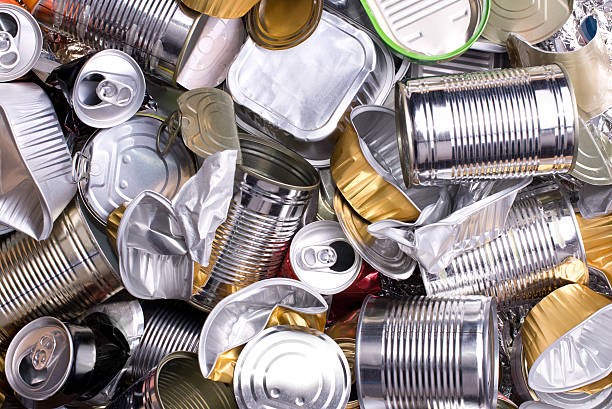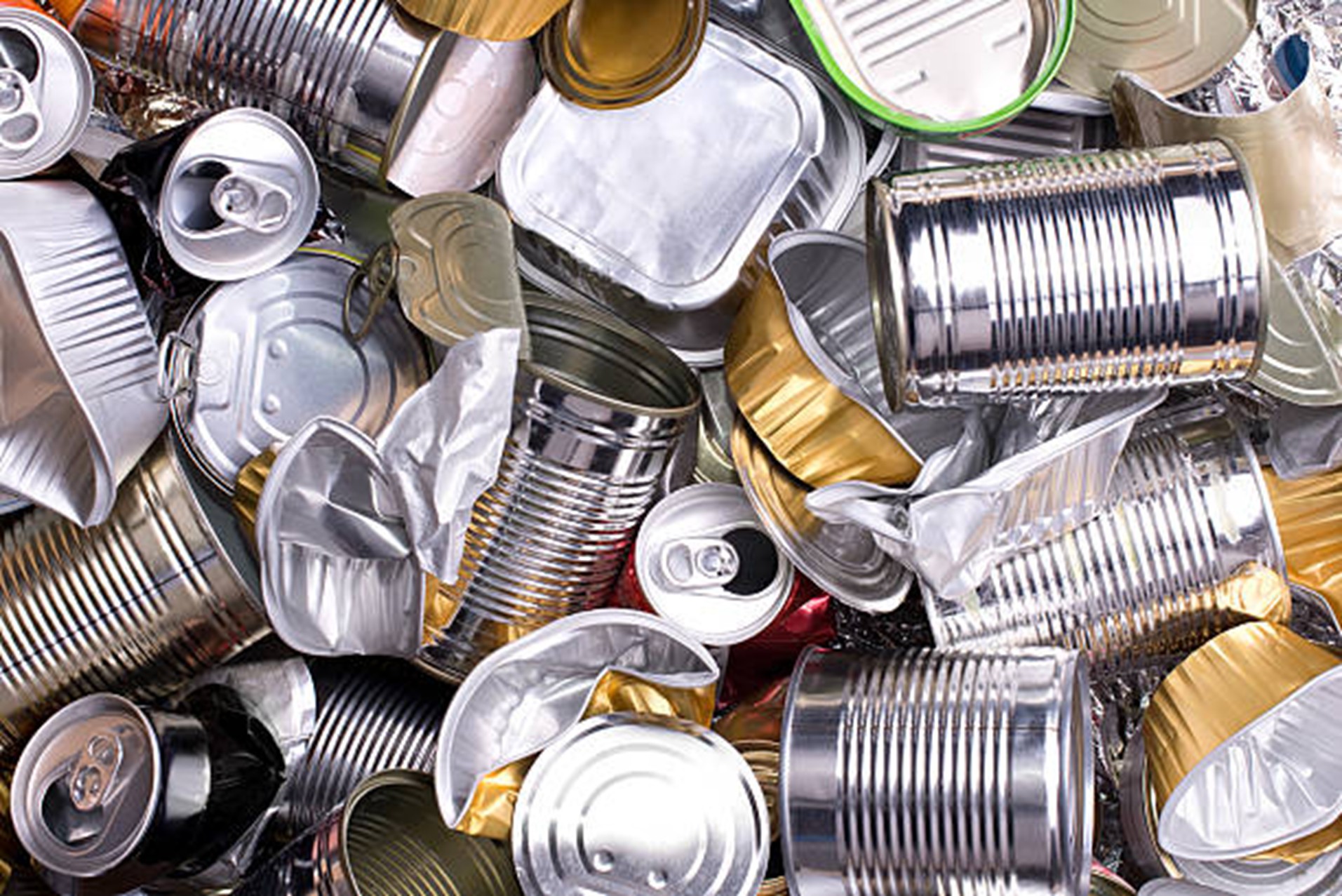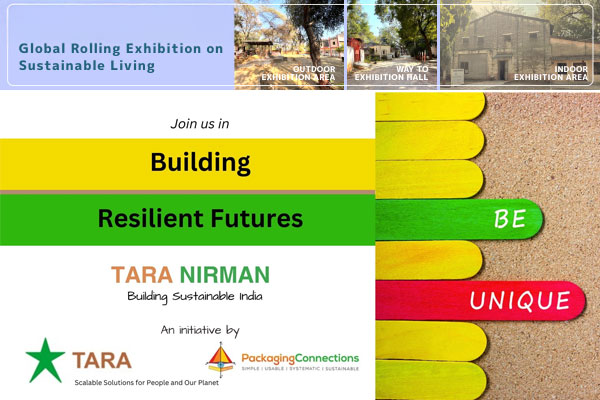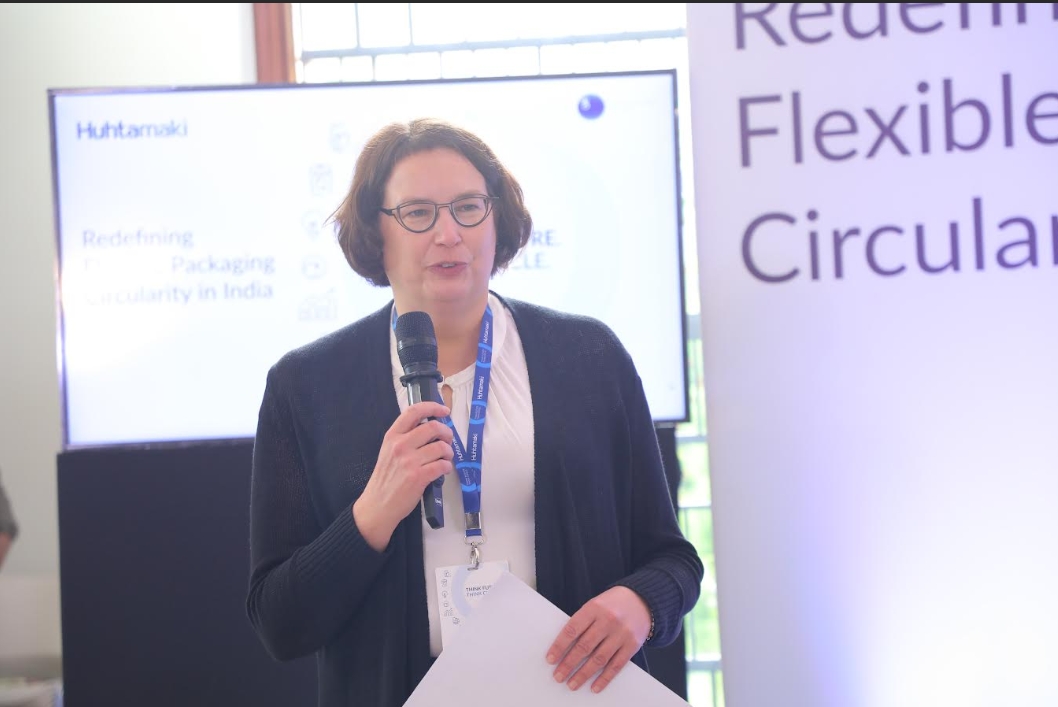
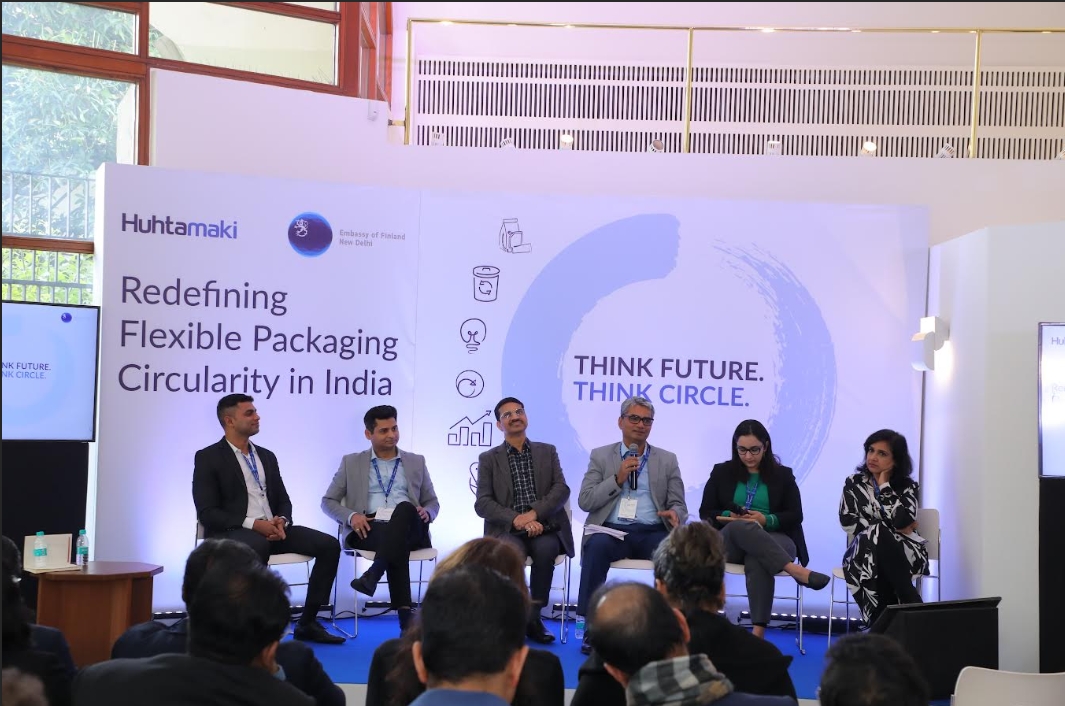
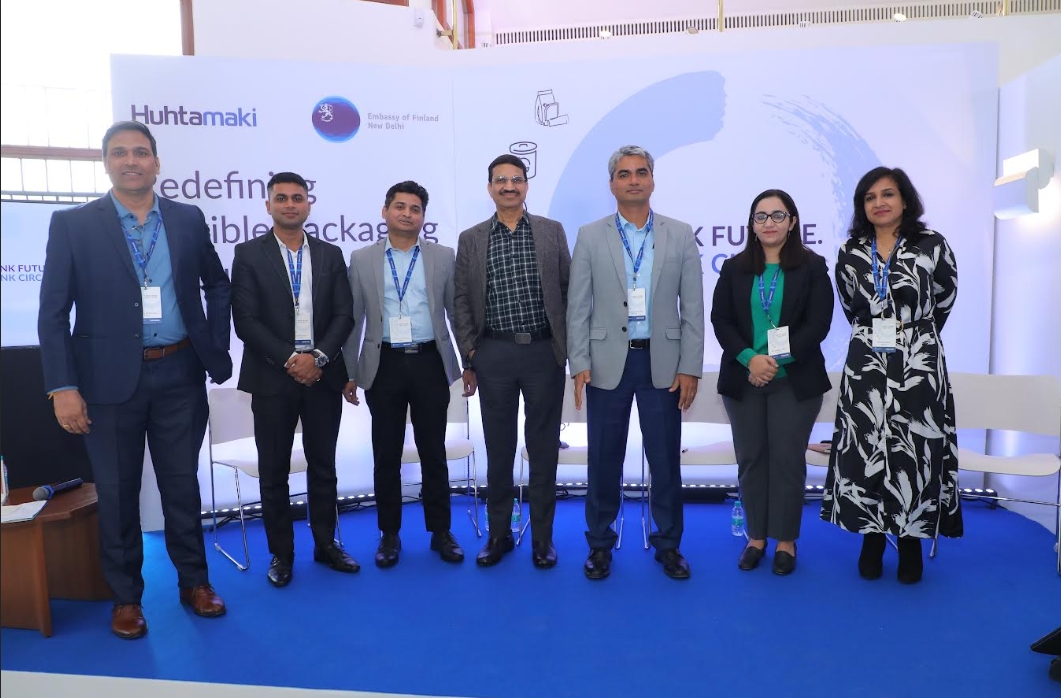
Huhtamaki India, a leading provider of primary consumer packaging and decorative labelling solutions, and part of Huhtamaki Oyj, a Finland based global food packaging company, hosted the 2nd edition of Think Circle at Embassy of Finland in New Delhi. The event, organized in partnership with the Embassy of Finland, and knowledge partner Confederation of Indian Industry (CII) kicked off with an exclusive, closed-door roundtable and featured a presentation of the new 'Design for Recycling Guidance for Films and Flexible Packaging.' These guidelines, developed and launched by the CII-India Plastics Pact’s (IPP) initiative in December 2024, mark a pivotal moment in advancing a circular economy for flexible packaging in India.
The event witnessed participation from Ministry of Environment, Forest and Climate Change (MoEFCC), and other leading industry players, think tanks, policymakers, and innovators, highlighting the untapped opportunities in revolutionizing India's packaging ecosystem.
As part of the event, a panel discussion titled “Redefining the circularity of flexible packaging in India,” featured an esteemed lineup of panelists, including Chinmaya Dandekar, GM – Packaging and Sustainability, Godrej Consumer Products Ltd., Rashi Agarwal, Chief Business Officer, Banyan Nation, Vishal Poojara, Procurement and Packaging Sustainability, ASEAN region, Mondelez India, Sanjay Gupta, Head of Packaging, DS Group, Snigdha Berry, Corporate Affairs, Nestlé; and Dhananjay Salunkhe, Managing Director of Huhtamaki India. The session was moderated by Ruturaj Kamthekar, Vice President, Strategic Business Development and Marketing, Flexible Packaging at Huhtamaki.
The presentation of design guidelines was one of the landmark moments of the event. Flexible packaging dominates India’s plastic usage, accounting for 73% of all plastic packaging. Further, the market is projected to grow to USD 12.72 billion, with a CAGR of nearly 11% from 2021-2025. Its widespread application spans essential categories, including 93% of food products, 84% of personal care items (units sold), and 98% of homecare related products. However, the packaging sector faces significant hurdles in recyclability due to the widespread use of multilayered, non-recyclable materials. The newly introduced guidelines provide technical and feasible inputs to organizations, supporting them in transitioning to recyclable flexible packaging. These guidelines aim to increase awareness and promote the use of mono-material designs, restricting harmful pigments like carbon black, and advocating for recyclable barrier layers.
Commenting on the event, Dhananjay Salunkhe, Managing Director at Huhtamaki India said, “We are proud to host the presentation of these design guidelines for flexible packaging in India. The country faces challenges with effective plastic waste management and is at a critical juncture in redefining its packaging practices. These guidelines are a crucial step toward creating a circular economy by ensuring flexible packaging is designed for recyclability. At Huhtamaki, we are committed to collaborating with partners to raise awareness and support the widespread adoption of recyclable packaging, contributing to a more circular future.”
Summary of recyclability guidelines for films and flexible packaging
1. Mono-material Designs: Use a single dominant polymer (e.g., PE or PP) for the base packaging material, with a purity level of 90% or more. Secondary materials, if unavoidable, should not exceed 5% individually of the total structure to ensure compatibility with recycling streams.
2. Reduction of Problematic Pigments: Avoid the use of carbon black and other dark pigments that interfere with sorting technologies. Dark pigments are acceptable for packaging if they do not contain carbon black. Instead, opt for colourless, white colour, or paler colours, which are preferred by recyclers and increase the material's value in the recycling market.
3. Optimized Barrier Layers: Use barrier materials that are recyclable and do not exceed 5% of the total packaging weight. Acceptable materials include EVOH or EVA. Avoid problematic layers like PVC, metallized PET, and aluminum foils, which complicate recycling.
4. Adhesive Restrictions: Limit adhesive use to less than 5% of the total pack weight. Choose adhesives that are compatible with recycling processes. Slip additives, anti-block additives, and tackifiers are commonly used in flexible packaging, that do not increase the product density.
5. Minimized Use of Inks: Restrict ink coverage to no more than 5% of the total pack weight. Use water-soluble inks or Solvent-based non-transferable inks instead of inks containing heavy metals and PVC binders or inks that bleed in dye washes.
6. Labeling for Compatibility: Ensure labels are either made from the same material as base packaging (e.g., PE labels for PE packaging) or are easily removable. PVC tapes on flexible packaging pose challenges during recycling and should be avoided. Paper labels are not ideal; however, if used, they should be easily removable. PP packaging and PP labels on PE packaging are not optimal; however, they do not pose challenges during recycling.
7. Residual Content: While a minimum threshold of 1% of product residue in flexible packaging is broadly recommended globally, recyclers have not yet determined a threshold for Indian conditions. However, it is essential for brands to clearly communicate to consumers the importance of removing as much of the product from packaging as possible, before disposal. This will maximise the amount of postconsumer flexible packaging waste channeled to recyclers.
Think Circle is a forum fostering open discussions on challenges and opportunities in achieving circularity within the packaging value chain.
Commenting on the collaboration, HE Kimmo Lähdevirta, Ambassador of Finland to India, said, “Finland has long been at the forefront of circular economy innovation, pioneering sustainable solutions that transform how we design, use, and recycle materials. For Finland, circular economy is a tool for achieving sustainable development, combatting climate change, saving natural resources, and improving the state of the environment, all while generating economic growth and jobs. This event reflects Finland’s commitment to partnering with Indian companies and stakeholders to advance the circularity of flexible packaging in India. By combining Finnish expertise in sustainable design with India’s dynamic innovation ecosystem, we can create solutions that set new benchmarks for sustainability and inspire change globally.”
Seema Arora, Deputy Director General, Confederation of Indian Industry, said after the event, “CII’s work on sustainability supports Indian industry in a range of areas. Where plastic packaging is concerned, a key challenge for the FMCG industry in India is to create recyclable options for flexible formats. Through the India Plastics Pact, CII provided an enabling platform to collaboratively develop a design guide for films and flexible packaging. The guidance document, co-created with stakeholders across the plastic packaging value chain will help brands and convertors move towards a uniform design practice for flexible packaging placed on the Indian market.”
About Huhtamaki
Huhtamaki is a leading global provider of sustainable packaging solutions for consumers around the world. Our innovative products protect on-the-go and on-the-shelf food and beverages, and personal care products, ensuring hygiene and safety, driving accessibility and affordability, and helping prevent food waste. We embed sustainability in everything we do.
Huhtamaki has over 100 years of history and a strong Nordic heritage. Our around 18 000 professionals are operating in 37 countries and 103 locations around the world. Our values are Care Dare Deliver. In 2023 Huhtamaki’s net sales totaled EUR 4.2 billion. Huhtamäki Oyj is listed on the Nasdaq Helsinki and the head office is in Espoo, Finland. Find out more at www.huhtamaki.com.
About Embassy of Finland
The Embassy of Finland in New Delhi represents Finland in India, Bangladesh, Sri Lanka, Bhutan, and the Maldives. It plays a vital role in fostering diplomatic relations, promoting economic cooperation, advancing cultural exchange, and strengthening people-to-people connections.
As part of the Team Finland network, the Embassy works to support Finnish businesses, promote education and innovation, and advocate for sustainable solutions to global challenges. The Embassy is dedicated to showcasing Finland's strengths as a leading destination for work, travel, and investment, highlighting opportunities in talent mobility, cutting-edge technology, and sustainable development. For more information, please visit https://finlandabroad.fi/web/ind/mission.
About Confederation of Indian Industry
The Confederation of Indian Industry (CII) works to create and sustain an environment conducive to the development of India, partnering Industry, Government and civil society, through advisory and consultative processes.
For more than 125 years, CII has been engaged in shaping India’s development journey and works proactively on transforming Indian Industry’s engagement in national development. With its extensive network across the country and the world, CII serves as a reference point for Indian industry and the international business community.
In the journey of India’s economic resurgence, CII facilitates the multifaceted contributions of the Indian Industry, charting a path towards a prosperous and sustainable future. With this backdrop, CII has identified “Globally Competitive India: Partnerships for Sustainable and Inclusive Growth” as its Theme for 2024-25, prioritizing 5 key pillars. During this year, it would align its policy recommendations, initiatives, and activities with this overarching framework to facilitate strategic actions for driving India’s global competitiveness and growth through a robust and resilient Indian Industry.




